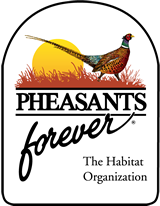Field windbreak plantings offer pheasants a variety of cover values. Pheasants use them primarily as travel corridors between different fields, as loafing cover during the day, and often to establish breeding territories and crowing sites. The presence of field windbreaks can also increase the cumulative habitat value of the surrounding landscape because they provide a large amount of escape and security cover, and when composed of 5 or more rows, winter weather protection.
Field windbreaks also offer a host of environmental benefits, including lessening soil and moisture loss, not to mention many other wildlife benefits aside from pheasants, these plantings are normally contracted through the USDA’s Farm Bill Programs such as Continuous CRP, EQIP, and WHIP. In recent years, chapters have used this opportunity to enroll a landowner in a Farm Bill Program and work as the contractor to plant the project, while spending their PHIP budget on other projects.
Field Windbreak Plantings by Year
| 1998 | 1999 | 2000 | 2001 | 2002 | Total | Total Feet | |
| Phillips County | 6 | 18 | 38 | 20 | 82 | 377,577 | |
| Northeast Colo. | 1 | 1 | 1,791 | ||||
| Sedgwick County | 2 | 1 | 3 | 5,561 | |||
| East Central CO | 3 | 1 | 4 | 7,588 | |||
| Baca County | 1 | 1 | 3,960 | ||||
| Morgan County | 2 | 1 | 3 | 9,982 | |||
| Washington County | 2 | 2 | 4 | 16,746 | |||
| Yuma County | 3 | 3 | 6,713 | ||||
| TOTALS | 7 | 23 | 44 | 27 | 101 | 389,918 |








